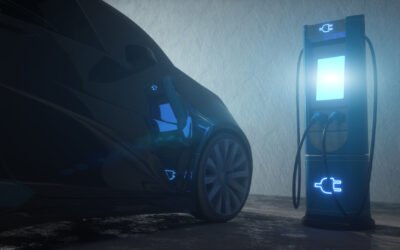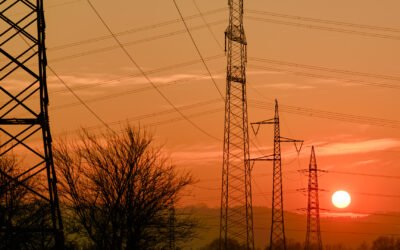Conventional electricity generation has been fulfilling electricity demand and driving economic growth for decades, but it is not sustainable in the long run as it poses a serious environment threat. Hence especially following the ‘Paris Climate Treaty’[1] world is looking towards renewable electricity generation which provides sustainable solution to environmental and economic worries.
According to International Energy Agency (IEA)[2], Global transport emissions increased by less than 0.5 % in 2019 (compared to 1.9 % annually since 2000) because of efficiency improvements, electrification, and greater use of biofuels. Despite that, the transport sector still contributes 24% of direct CO2 emissions from fossil fuel combustion. Where road vehicles for instance cars, trucks, buses and two and three wheelers account for around three-quarters of transport sector’s CO2 emissions and rest belongs to emissions from shipping and aviation.
Electrification of the transport sector provides an economical and environment friendly solution which will help in achieving carbon neutrality in the long run. But in the pathway to electrification of transport sector, there are still road-blocks which need to be tackled. For instance, a gas filling station can be built anywhere zoning regulations permit, but when it comes to public electric vehicle charging stations (especially DC chargers), they need to be placed in the vicinity of dedicated service transformers connected with the electricity grid. Access to such electricity infrastructure is not easily available in the rural areas, so to bridge the service gap, off grid electric vehicle charging stations can be employed.
There are a number of off-grid electric vehicle charging technologies available for instance solar powered, wind powered, hydrogen fuel cell powered or biomass powered off-grid electric vehicle charging stations
where majority of the technologies are in either proposal state or a couple of pilot projects have been done. Details of these solutions and their pros and cons have been discussed below:
Solar powered charging stations
Solar powered EV charging system can be useful to bridge service gaps in rural areas where there is plenty of solar energy available. Electrify America is bridging the service gaps with off-grid electric vehicle charging stations powered by solar panels. It is investing 2 million USD in 30 standalone solar powered EV charging stations manufactured by Beam Global (formerly Envision Solar) in California.
Beam’sEV ARC 2020 is mobile technology and can be easily transported where each standalone station is equipped with 4.28 kW panels, solar tracking array, 32 kWh of on-board battery storage and two Electrify America Level 2 EV Chargers capable of providing power up to 6kW. ‘empower-solar’ and ‘paired power’ are also providing solar powered EV charging solutions, but this is still an emerging technology with no widespread installation observed.
Wind powered charging stations
Wind powered electric vehicle charging stations can be installed in rural coastal areas or rural areas falling in wind corridors lacking access to electricity grid. In 2012, the world’s very first wind powered electric vehicle charging station was installed in Barcelona, Spain. Vertical wind turbines were procured from Urban Green Energy where General Electric integrated its EV charging station with it. The technology is referred to as ‘Sanya Skypump’. As of now off-grid wind powered charging stations are still an emerging technology and no widespread installations are observed.
Hydrogen fuel cell powered charging stations
ABB announced the initiation of strategic partnership with AFC energy to launch next generation off grid electric vehicle charging stations in areas lacking access to electricity grid. They have claimed that this solution will provide pollution free electricity by combining the most abundant element in Universe (hydrogen) and oxygen.
HydroX-Cell (L) H-Power EV Recharge System is claimed to be world’s first hydrogen fueled EV charger for commercial and industrial vehicles which is modular and scalable. It allows bespoke or standardized units to be easily configured and connected to generate electricity as per requirements. The solution is placed in a container, insulated and can be easily transported and deployed.
Biogas powered electric charging stations
Uptake of electric vehicles require charging facilities which in turn need additional generation and transmission capacity. To meet Climate requirements, it is necessary that additional energy requirements are met through renewable energy sources. One of the problems with photovoltaic solar powered charging stations is that solar energy is available during the day but not at night.
Even if solar is supported with batteries, cloudy/foggy weather still poses a challenge and will reduce viability of the system. To deal with such limitations in certain geographies, biogas powered EV charging stations could play a significant role as biomass raw materials, methane and carbon dioxide, are available in most countries throughout the day, especially in rural areas. Effective and efficient use of biomass can enhance the operational hours of the system which is not possible with wind or solar.
As far as cost benefit analysis is concerned producing electricity from solar sources is more expensive than producing it from biogas. The factors that influence the biogas production include biogas potential of feedstock, design of digester, nature of substrate, pH and temperature etc.
Biomass EV charging system will be mostly installed in rural areas so transportation cost of biomass will be negligible in most cases. Biogas powered EV charging station is not commercially available anywhere till date although power is being produced from biomass.
In Conclusion
Electricity grid service gaps in the future will be bridged through off-grid renewable powered electric vehicle charging stations but this is still an emerging technology. According to Power Technology Research, globally public charger installed base is expected to grow from 1.2M in 2020 to 4.2M in 2025 which accounts for ~28% annual growth over a span of five years. Off grid charging stations will be less than 1 % of global installed base in the next 5 years. Application of off-grid EV charging technology will be limited to rural areas of only developed countries. Because of high prices there is little scope of these technologies in the developing world on a large scale. Hence, the widespread uptake of electric vehicle globally will still largely depend on on-grid electric vehicle charging stations.
[1] https://www.un.org/en/climatechange/paris-agreement
[2] https://www.iea.org/reports/world-energy-outlook-2020
About The Author

Muhammad Rafey Khan is Product Manager/Analyst at Power Technology Research. His responsibilities include managing a team of analysts to conduct research on Electric Vehicle Supply Equipment (EVSE) and Commercial and Off Highway Vehicle and conduct primary research for products related to electrical grids and generation facilities for countries in Europe, the Middle East, and Africa, America and the rest of world.
Prior to joining Power Technology Research Mr. Khan was a project engineer at Schneider Electric. Mr. Khan received is undergraduate degree from Lahore University of Management Sciences in Lahore, Punjab, Pakistan and his Masters of Business Administration degree from Institute of Business Administration in Karachi, Sindh, Pakistan.
More about our EV Market Research
Recent Insights
Nordics EVCI Market Comparison: Quarterly Growth and Market Dynamics – 2024
This infographic examines the ambitious policies and regional targets that are propelling the growth of Electric Vehicle Charging Infrastructure (EVCI) across the Nordic countries, particularly in Norway, Sweden, Denmark, and Finland. As leaders in electric mobility,...
Electrifying Future: Emerging Trends and Strategic Targets in the Middle East
This infographic presents an overview of the burgeoning electric vehicle (EV) market in the Middle East. It highlights the region's ambitious targets and key trends to shift towards sustainable transportation. It explores how the Middle East is steering towards a...
US Elections: Consequences of a Second Trump Presidency for Energy Sector
The US is making strides to move away from fossil fuels and eventually decarbonize the energy sector. The White House aims to achieve 80% renewable energy generation by 2030 and 100% carbon-free electricity by 2035. On the other hand, for electric vehicles, it has set...
Sustainability Across Sectors: Highlights from GreenTech Festival 2024
Recently, I had the privilege to attend and present at the Greentech Festival, an excellent event in the realm of sustainability. This influential gathering left a profound impact, and I am delighted to share a comprehensive analysis of my experiences. The Greentech...



